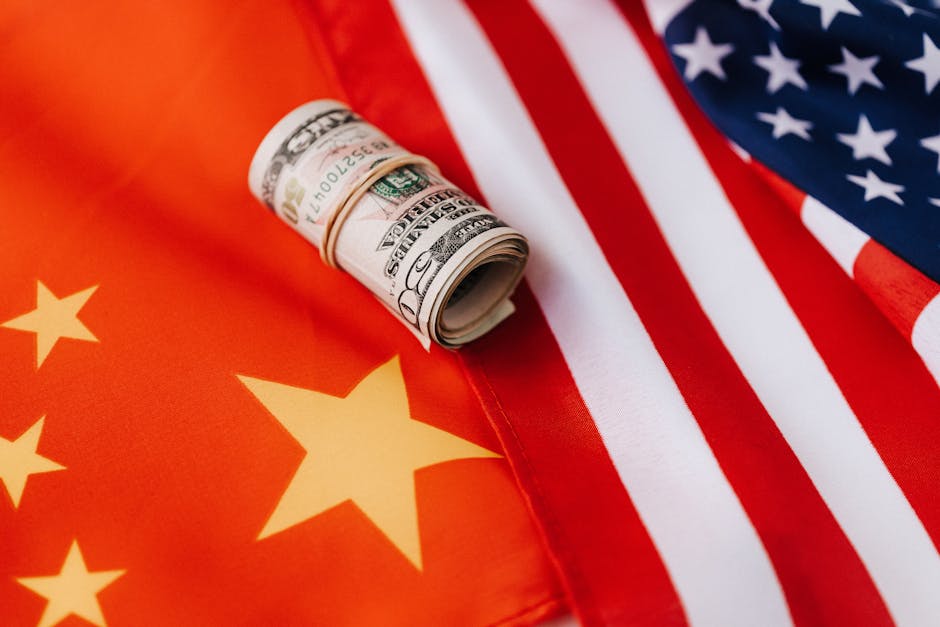Navigating the Complexities of Global Trade Wars and Tariffs
Global trade wars and tariffs have become defining features of the modern economic environment, influencing how countries interact and compete on a global scale. These conflicts, characterized by retaliatory tariff measures and protectionist policies, affect the flow of goods, services, and capital across borders. While some nations leverage tariffs as a tool to protect domestic industries, others view them as barriers that hinder free trade. Understanding these dynamics is essential to grasp how such policies impact economies, businesses, and consumers worldwide.

Understanding the Roots of Trade Wars
Trade wars often stem from disagreements between nations over trade imbalances, intellectual property rights, or unfair practices like subsidies for domestic industries. Historical examples highlight how these conflicts are rarely new phenomena. For instance, during the 1930s, the Smoot-Hawley Tariff Act in the United States led to higher duties on imports, sparking retaliation from trading partners and exacerbating the Great Depression. This event serves as a reminder of how such policies can escalate quickly with significant consequences.
In recent years, notable trade wars have unfolded between major economies like the United States and China. The U.S., citing concerns over intellectual property theft and unfair trade practices, imposed tariffs on billions of dollars' worth of Chinese goods starting in 2018. In response, China levied its own tariffs on American exports, impacting sectors such as agriculture and technology. This tit-for-tat approach disrupted global supply chains and created uncertainty for multinational businesses.
While governments often justify these actions as necessary to protect national interests or level the playing field, critics argue they can lead to unintended economic fallout. For instance, increased costs for imported goods may result in higher prices for consumers. Additionally, exporters face reduced demand in foreign markets due to retaliatory measures.
The Mechanics of Tariffs
Tariffs are taxes imposed by a government on imported goods. They are often used to encourage consumers to buy domestically-produced products by making imports more expensive. There are several types of tariffs: ad valorem tariffs (based on a percentage of the item's value), specific tariffs (a fixed fee per unit), and compound tariffs (a combination of both).
While their primary purpose is to protect domestic industries from foreign competition, tariffs can also serve as a source of revenue for governments. For example, according to data from the U.S. Census Bureau, tariff revenue for the United States reached approximately $85 billion in 2022 alone.
Imposing tariffs isn’t always straightforward. Countries that rely heavily on exports may see their economies suffer when trading partners retaliate with their own measures. The following table illustrates how major economies have utilized tariffs over recent years:
| Country | Tariff Revenue (2022) | Primary Targeted Imports |
|---|---|---|
| United States | $85 billion | Electronics, steel |
| China | $75 billion | Agricultural products |
| European Union | $42 billion | Automobiles |
| India | $28 billion | Textiles, machinery |
The table demonstrates not only the financial implications but also how specific industries often bear the brunt of these policies.
The Ripple Effects on Businesses and Consumers
Trade wars and tariffs have far-reaching consequences beyond governments and international relations. Businesses often face increased costs due to higher import duties on raw materials or finished products. For example, manufacturers reliant on steel or aluminum imports may see their production costs rise significantly when tariffs are introduced. These additional expenses frequently get passed down to consumers through higher retail prices.
For small and medium-sized enterprises (SMEs), which may lack the resources to absorb such costs or diversify their supply chains quickly, the impact can be particularly severe. A survey conducted by the National Retail Federation in 2021 revealed that nearly 80% of SMEs reported declining profit margins as a direct result of tariff-related expenses.
Consumers also feel the effects in their daily lives. From electronics to groceries, price increases can stretch household budgets thinly. In some cases, reduced availability of imported goods leads to limited choices for buyers. For instance, during periods of heightened trade tensions between Japan and South Korea in 2019-2020, Japanese car sales in South Korea plummeted by over 60%, reflecting consumer boycotts amid strained relations.
- Diversification Challenges: Companies seeking alternative suppliers often encounter logistical hurdles or increased costs associated with shifting production bases.
- Job Market Shifts: Industries protected by tariffs might see job growth domestically; Export-dependent sectors could face layoffs due to reduced access to foreign markets.
- Innovation Delays: Increased production costs may divert funds away from research and development efforts critical for innovation.
Navigating Policy Solutions Amid Economic Strains
Tackling trade disputes requires careful negotiation and diplomacy. Organizations like the World Trade Organization (WTO) play a pivotal role in mediating disputes and establishing rules-based frameworks for resolving conflicts. For example, under WTO guidelines established in 1995 during its inception year with agreements like GATT (General Agreement on Tariffs & Trade), member nations agree upon standardized protocols aimed at preventing unilateral actions escalating into full-blown conflicts.
Bilateral agreements between countries can also help mitigate tensions while fostering cooperation over competition. One notable example is the United States-Mexico-Canada Agreement (USMCA), which replaced NAFTA in 2020. The agreement updated provisions relat
This article was generated by AI